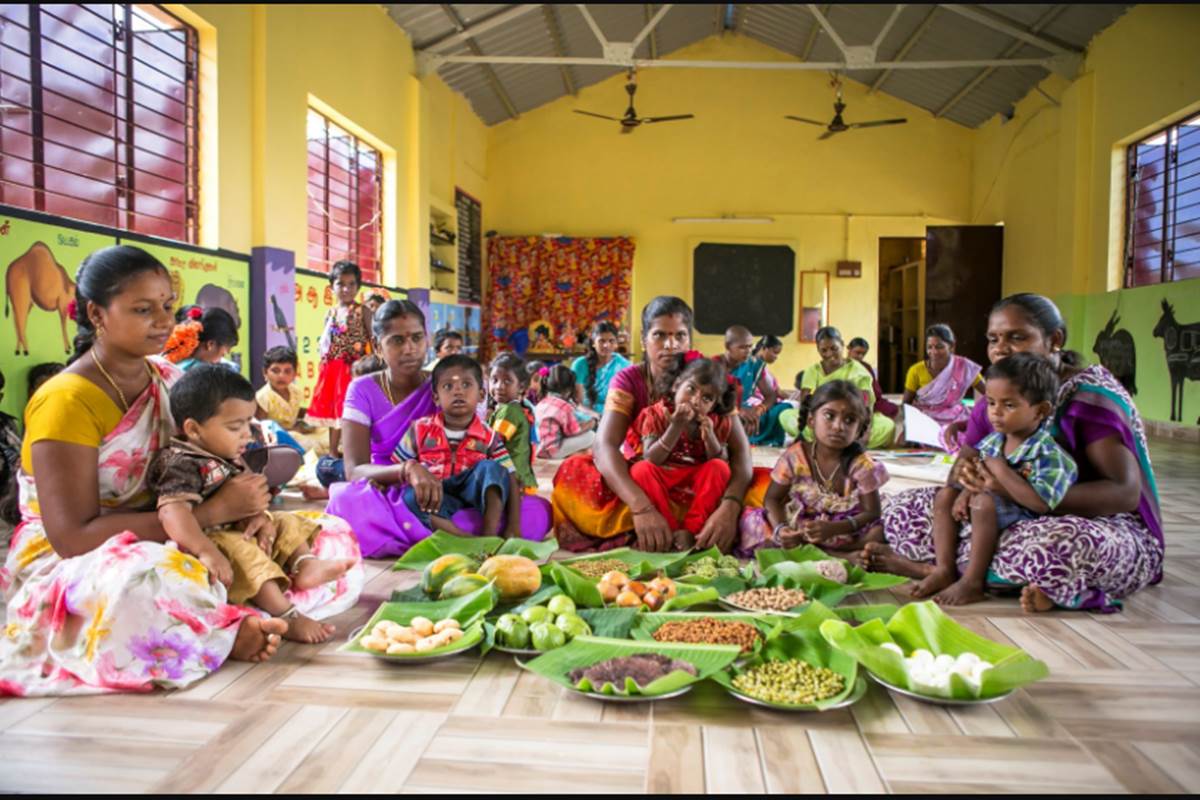These states had an implementation score of over 70 percent: NITI Ayog Report
According to a NITI Aayog report, while implementing the POSHAN Abhiyaan, 12 out of the 19 large states performed relatively better. Maharashtra, Andhra Pradesh, and Gujarat have been listed as the top three states. The best performer among the small states was Sikkim. The mission aims to provide a high-impact package of interventions in the first 1,000 days of a child’s life.
What is POSHAN Abhiyaan Scheme?
Prime Minister’s Overarching Scheme for Holistic Nutrition, or POSHAN Abhiyaan. A multi-ministerial convergence project called POSHAN Abhiyaan (formerly known as the Public Nutrition Mission). It aims to increase national awareness of and battle malnutrition in a mission mode.
The Prime Minister’s Overarching Scheme for Holistic Nourishment (POSHAN Abhiyaan), the Centre’s main program. This program was introduced in 2018 with the objective to combat malnutrition in the country.
It is a program that falls under the ICDS umbrella. And integrates with other services and initiatives to give intervention strategies during the first 1,000- day period.
TO KNOW MORE ABOUT POSHAN ABHIYAAN CLICK HERE…..
Punjab and Bihar performed the worst among central states
According to a government think tank assessment, Punjab and Bihar performed the worst among central states in terms of the overall implementation. Dadar and Nagar Haveli and Daman and Diu topped the list of Union Territories (UTs).
It was noted that only 17 states and UTs had more than 75% of children aged between 12 and 23 months who had received all recommended vaccinations. While 11 states and UTs had less than 25% of completely immunized children.
According to the research, many states and UTs have provided all recipients with take-home rations (THR) as part of the WCD (Women and Child Development) program coverage.
However, it noted that coverage remained low in Bihar (65% of expectant mothers, 62% of lactating mothers, and 52% of children), Punjab (78% of expectant mothers, 76% of lactating mothers, and 65% of children), Sikkim (84% of expectant mothers, 84% of lactating mothers, and 77% of children), and Jammu and Kashmir (49 percent pregnant women, 51 percent lactating women, and 54 percent children).
The research claims that 5 states and UTs treated fewer than 25% of child diarrhea cases with ORS, while 16 states and UTs treated more than 75% of cases of child diarrhea in children (0-59 months).
The research noted that POSHAN Abhiyaan’s total fund utilization is poor, with less than 50% of the money being used in 23 states and UTs. And that “there is an urgent need to accelerate its use through channels like hiring human resources and purchasing devices.”
Suggestions made as per the POSHAN Abhiyaan study
The study emphasized the necessity of making quick use of the money allocated for POSHAN Abhiyaan and making sure there are enough medical facilities and supplies.
It also advocated for maintaining and strengthening the ICDS (Integrated Child Development Scheme) and health platforms in order to increase coverage and elevate the standard of crucial health and nutrition interventions.
The research recommended operationalizing the convergence action plans (CAPs) to ensure that convergence is outcome-oriented and that initiatives across sectors reach the intended beneficiaries.
It was noted that efforts to raise household demand for services will also be crucial to achieving coverage. As a result, in 2021, the SBCC (social and behavioral change component) pillar of POSHAN Abhiyaan should put a major emphasis on creating demand for access to and use of health and ICDS services.
It emphasized the importance of working toward data management at the state and UT levels in order to monitor their progress toward the Abhiyaan’s goal. And to allow for performance comparisons across states.
According to the research, HR position gaps must be resolved, especially in states where fewer than half of the necessary roles are filled, in order to maintain progress under the POSHAN Abhiyaan.
The mission must be accomplished in every state for the betterment of the people
The mission aims to provide a high-impact package of interventions in the first 1,000 days of a child’s life. Strengthen their delivery through technology and management. Boost front line workers’ (FLWs’) capacity. Facilitate cross-sectoral convergence to address malnutrition’s multidimensional nature. Improve behavior change and community mobilization. And the mission must be accomplished in every state for the betterment of the people by taking in account the suggestions made by the study.
